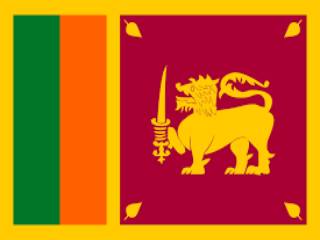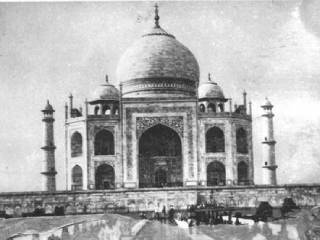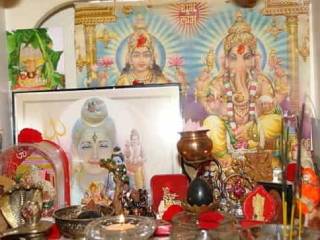Shravan Shukla Trutiya Kaliyug Varsha 5112
By: Francois Gautier
The crisis in the Valley has been fomented by anti-nationals. Sovereignty is key, and the Government must take care to eschew uncalled-for concessions or subsidies.
Today, if a Hindu wants to undertake a pilgrimage to one of the most ancient shrines in the history of Hinduism, Amarnath, he must do it under heavy police and Army protection, and at the risk of his life. It is as if, not only is he going to a foreign country, but also to a hostile foreign country.
Today, as it is now known, there is a conscious, well-planned movement to provoke the police and the BSF by a widespread stone throwing movement in the Valley of Kashmir. Hundreds of BSF soldiers have been hurt in the last few months.
Inevitably, when the crowd goes out of control, limited firing has to be resorted to and casualties do happen. Of course, the entire Valley, which every second day, goes on strike for the flimsiest reason, shuts down and the media and Amnesty cry foul.
The frightening fact is that the writ of the Union Government is nearly gone in Kashmir. Every TV footage shows crowds waving Pakistani flags and nobody objects. Bollywood has spawned a spoof on Osama Bin Laden and nobody in India seems to find anything wrong with it. Many are unaware that Kashmir is the State receiving most subsidies.
Every time the Prime Minister goes there thousands of crores of subsidies are announced. Since 1989, all Government officials in the Valley of Kashmir, while they hardly work in the year because of strikes and curfews, get their pay check.
The truth is that the ground is prepared for an agreement covertly brokered by the US and coated in clever words, which will give de facto independence to Kashmir. There are good, intelligent people in the Congress. Surely some of them would agree that this would be a tragedy for India?
Unfortunately, in Delhi amongst journalists and intellectuals, you will find many, such as Mr Vinod Mehta of Outlook magazine, who will say: “So what? India is a big country, we can do without Kashmir.” Why should India retain Kashmir, then?
The most obvious reason is that the Valley of Kashmir is of extreme strategic importance to India. If Kashmir would fall out of India’s hands, New Delhi would be surrounded by three hostile nations who strategically could swoop down from a height: Tibet, which was once the peace buffer between India and China; Nepal, which is de facto in hostile hands; and Kashmir, the gateway between the Middle East and Asia.
Secondly, if India allows Kashmir to go, why not Manipur, why not Punjab, or even Tamil Nadu, which has Dravidian aspirations? Many countries in the world face separatist problems, whether France with Corsica, Spain with the Basques, or even Britain with the Falklands, which is thousands of miles away. Why should India let go of Kashmir, which has been culturally, and physically part of its body for at least 5,000 years?
Finally, Kashmir is the cradle of Shaivism, thousands of yogis, gurus, sannyasins, have prayed meditated, performed tapasya in this holy land; and for that reason only, it should be sacred to India.
Part of the blame for the present apathy of Indians towards the deteriorating situation in Kashmir, must fall on the Press, particularly the Western media, which has always maintained that Kashmir was a “disputed” territory.
Many of us journalists know that since the mid-80s Pakistan encouraged, financed, trained and armed Kashmiri separatism. But Mark Tully, for instance, who is revered in India for his ‘fair’ reporting (and has most probably written Hindutva, Sex & Adventures — Roly Books), always made it a point to say: “Elections are being held in Indian-held Kashmir”; or “Kashmir militants (instead of ‘terrorists’) have killed Hindus”.
All the other foreign journalists, yesterday and today, have followed the BBC’s benchmarks. Even President Barack Obama’s foolish policy vis-à-vis the country which fosters nine-tenths of terrorist attacks in the world has been arguably influenced by the media.
It is not only that the few hundred Hindus (there were five lakh in 1980) who have chosen to remain in the Valley of Kashmir who are under threat. It is not only the pilgrims of Amarnath, visiting a shrine in their own country, today even Hindu gurus are targeted: They are defamed, made fun of. Sri Sri Ravi Shankar is the latest to have been targeted by the media.
The Foundation Against Continuing Terrorism, a non-political, non-partisan, human rights organisation, can provide the umbrella under which the 12 spiritual leaders who have a million plus disciples —
Satya Sai Baba, Sri Sri Ravi Shankar, Mata Amritanandamayi, the Shankaracharya of Kancheepuram, Guruma of Ganeshpuri, Shri Ramdev, Sadhguru Jaggi Vasudev, to name some of them — can meet three times a year and issue a number of adesh, which will be binding on 800 million Hindus in India, a billion worldwide, as a way forward. The safeguard of Kashmir and the Amarnath pilgrimage could be on its first agenda.
Source: Pioneer
Also See
 |
Hang terrorist Mohd AfzalMohammad Afzal.is a Kashmiri terrorist who attacked parliament in 2000. Supreme court has given death sentence but congress is protecting this anti-Indian. |
 |
Hindu Genocide in Kashmir & Bangladesh
Online photo exhibition of Hindu genocide and temples destruction in Kashmir by local Muslims. Series of exhibitions being arranged. |

 Mizoram: EC accepts Christians’ demand to defer counting on Sunday, but what if Hindus had made a similar demand?
Mizoram: EC accepts Christians’ demand to defer counting on Sunday, but what if Hindus had made a similar demand? Sign Petition : Immediately repeal the draconian and unconstitutional ‘The Waqf Act, 1995’
Sign Petition : Immediately repeal the draconian and unconstitutional ‘The Waqf Act, 1995’ Shriram : Sri Lanka’s saviour
Shriram : Sri Lanka’s saviour Why it is so cool to malign Hindu gods and goddesses, but it may not be that easy now
Why it is so cool to malign Hindu gods and goddesses, but it may not be that easy now Shocking Truth of Taj Mahal exposed by Late Pujya P. N. Oak
Shocking Truth of Taj Mahal exposed by Late Pujya P. N. Oak How are Hindus treated in states where they are in a minority?
How are Hindus treated in states where they are in a minority?